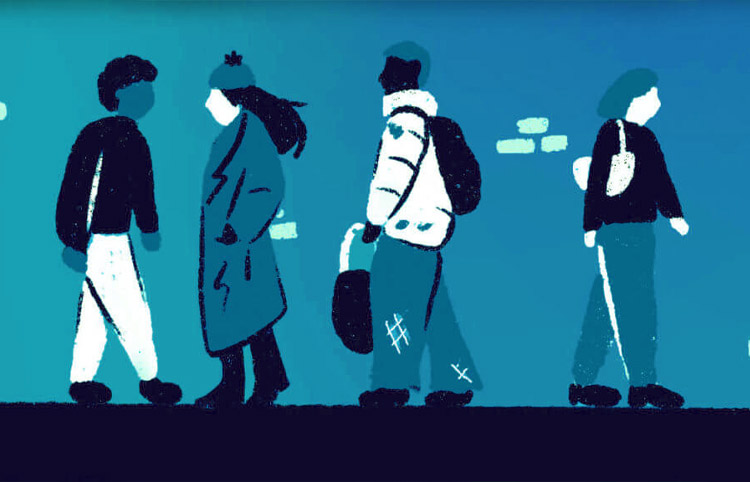The elimination of global poverty is certainly not a realistic aim in view of the various problems that are still arising in these poverty-stricken states, and such problems are also often more likely to lead to a continuation rather than the elimination of global poverty. At the same time, while initiatives had been taken by authorities or international institutions to deal with the problems, the effectiveness of it is however often undermined.
One of the main problems that caused some of these states to suffer from poverty is the control of the country under the corrupt government. The government often plays an important role in helping its people meet their social needs and other welfare. Thus, if their leaders are corrupt and are only concern with achieving their self-interest rather than the nation’s, then the elimination of global poverty will definitely be impossible. The Oil-for-food programme by the United Nations implemented in Iraq is an example of how a corrupt government in power could prevent the people from receiving the humanitarian aid they were supposed to get. In this incident, the UN officials and the Iraqi government were accused of siphoning off profits from the Oil-for-food programme. Under this programme, a percentage of the profits gain from the sale of oil were actually to be used to provide basic needs to the people there, however, due to corrupt officials, these benefits were not trickled down to the people and hence the inability to tackle the problems of poverty there. From here, it is clear to us that albeit initiatives taken by international institutions to address the problem of poverty, as long as there is the existence of corrupt government all these solutions may just ultimately proved to be ineffective.
On top of that, the debt problems that some of these Third World Countries face till today have also crippled them to an extent that they are unable to make economic progress and thus bring themselves out of impoverishment. For instance, for the poorest countries, $550 billion has been paid in both principal and interest over the last three decades and yet there is still a $523 billion debt burden left for them. Although various aids had been put forward to help these countries, some of these aids still failed to help deal with these debt problems and sometimes even backfired. The Heavily In-debt Poor Countries initiative, for example, was set up to help reduce the external debt for the poorest countries. However, it was instead backfiring in some cases as unfair conditions are also associated with this initiative and some of these debt relief advocates were making it even before the scheme was launched too. Therefore, with these huge financial burdens, it would certainly be difficult for these countries’ economies to pick up and thus the achievement of the aim of eliminating poverty for these states will certainly not be in the near future too.
At the same time, while many of the developed countries have played their part in helping these states, ironically they are also the ones that are worsening the situation there too. The falling commodity prices presented by these developed nations brought in tough business competition for these poor countries and also, the vast agricultural subsidies in North America and Europe have all combined to have various effects such as forcing farmers out of business and into city slums too. Hence, while steps have been taken by these richer nations to help these impoverished countries, the effectiveness is eventually undermined when their own government policies fail to take into consideration the adverse effects they may have on these nations.
On the other hand, the UN has also put forward other initiatives that saw hope for the aim of eliminating poverty on a global scale and such an initiative is the ‘Millennium Development Goal ‘. The first initiative calls for halving the proportion of people living in extreme poverty between 1990 and 2015 and some of the many actions taken were such as the elimination of school fees, upgrading slums and providing land for public housing etc. Indeed, living standards have risen dramatically over the last decades and the proportion of the developing world’s population living in extreme poverty has fallen from 28 per cent in 1990 to 21 per cent in 2001. Thus, this goes to show that the aim of eradicating global poverty may not after all be unrealistic.
Although recent research by the UN has shown that there are more people living in poverty in 8 Indian states than in 26 poorest African nations combined, patches of light are still showing, as a recent report has shown that improvements have been seen in these poor provinces too. No starvation deaths have been recorded in Chhattisgarh in recent memory and in Bihar, which was widely seen as India’s worse administered states, the crime rates have fallen and infrastructure is taking off too. Hence, despite the fact that poverty is still one of the major problems faced by India, the improvements that could take place even in one of their worst-hit states expresses to us that the aim of achieving the eradication of poverty on the global scale may not be that far off ultimately.
However, it is still important to note that the effectiveness of some of these initiatives is often limited due to the aforementioned problems that surface in many of these impoverished countries. Therefore, at this point in time, eliminating poverty at a global scale still remains uncertain and thus is an unrealistic goal.

